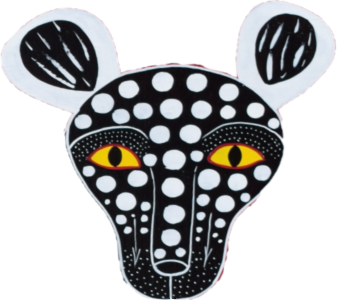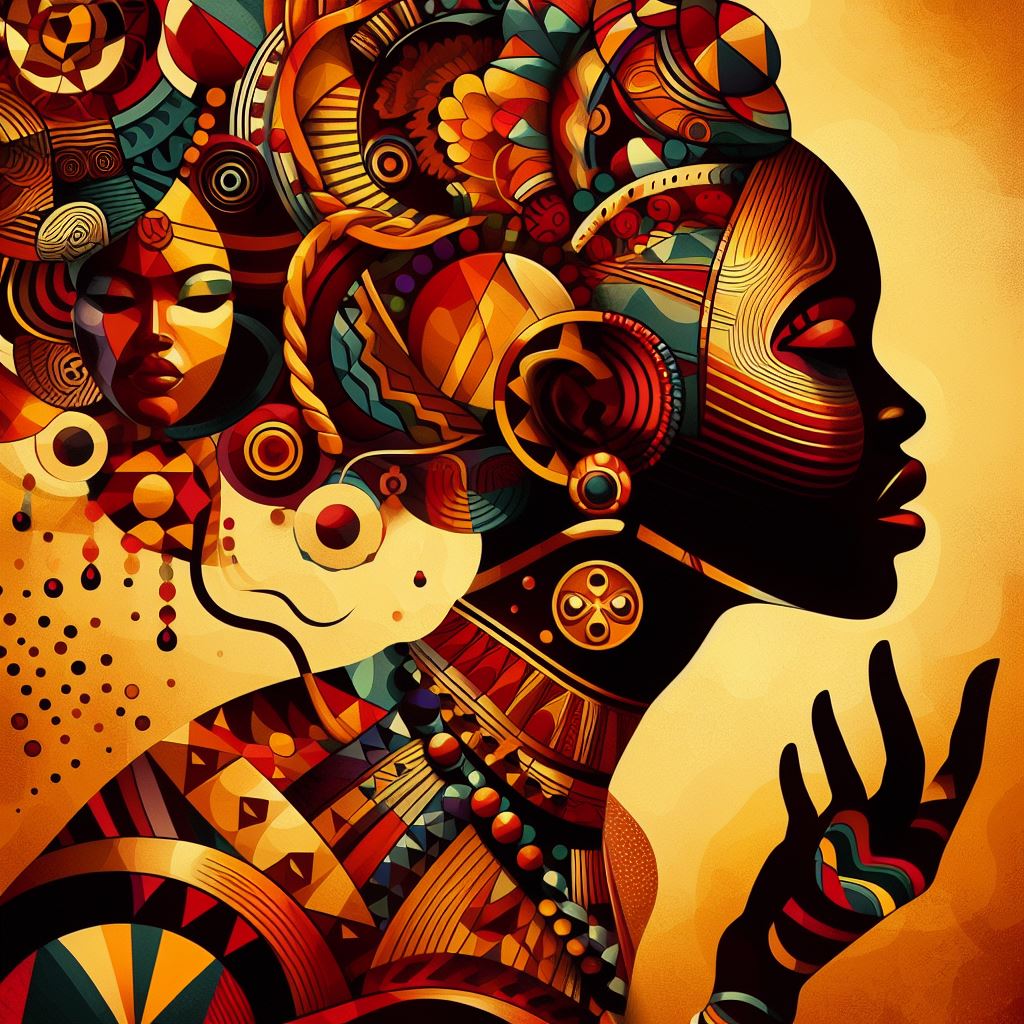April 23, 2023
Discover the vibrant beauty of African art on our website! We proudly offer a diverse collection of authentic African paintings. We invite you to explore our gallery and immerse yourself in the rich cultural heritage and artistic expressions. Visit our homepage today to experience the captivating world of African paintings.
Introduction
The role of women in African art is both rich and complex, reflecting diverse cultural practices, historical contexts, and evolving societal roles across the continent. Traditionally, women's contributions to African art have often been overshadowed by narratives that primarily celebrate male artists. However, recent efforts to reassess these narratives have brought to light the vital roles women have played as artists, patrons, educators, and cultural custodians. This article seeks to provide a detailed examination of women's roles in African art, tracing historical contributions, exploring contemporary challenges and opportunities, and analyzing the portrayal of women in various artistic forms.
Historical Context of Women's Roles in African Art
Pre-Colonial Contributions
Historically, women in many African societies have been at the forefront of artistic production, particularly in forms categorized as "women's arts." These include pottery, weaving, beadwork, and textile creation. For instance, among the Ndebele of South Africa, women are renowned for their intricate beadwork and house painting, which serve as expressions of identity and community pride. Similarly, Yoruba women in Nigeria have traditionally excelled in indigo dyeing and weaving, producing beautiful textiles that convey cultural narratives.
Women's contributions extend beyond mere creation; they have been central figures in the commissioning and preservation of art. In Mali, for example, Bamana women have historically commissioned masks and sculptures for ceremonies, ensuring the continuation of cultural practices. In the Democratic Republic of Congo, Luba women have served as custodians of royal artworks, playing a critical role in maintaining dynastic traditions.
Societal Structures and Gender Roles
Despite their contributions, women's roles in African art have often been relegated to the domestic sphere, where their work is considered utilitarian. This division reflects broader societal norms and gender biases that prioritize male artists and their work in more prestigious art forms, such as sculpture and painting. Women's artistic expressions, while significant, have often been undervalued, limiting their visibility and recognition in art historical narratives.
Emerging Recognition
In recent decades, there has been a growing acknowledgment of women's contributions to African art. The global art community is increasingly recognizing African women artists who challenge traditional gender roles through their work. They address pressing social issues, such as gender inequality and identity, using their art to explore and critique societal norms. This shift has paved the way for women to reclaim their narratives and assert their rightful place in the history of African art.

Traditional African Women Artists: Roles and Practices
Pottery
Pottery has long been a vital artistic practice among African women. They create both functional and decorative pieces essential for daily life and ceremonial purposes. Among the Baga of Guinea, women are celebrated for crafting intricate pottery, while Tutsi women in Rwanda are known for their beautifully shaped vessels used in various cultural rituals. These practices not only showcase artistic talent but also serve as a means of preserving cultural heritage.
Weaving and Textile Creation
Weaving is another significant domain where African women have excelled. Utilizing diverse techniques and materials, they produce textiles, baskets, and mats imbued with cultural meanings. For instance, Kuba women in the Democratic Republic of Congo are recognized for their exquisite palm leaf weaving, while Ashanti women in Ghana are famed for creating kente cloth, a prestigious textile symbolizing cultural identity and status. These textiles often carry stories, representing the collective history and values of their communities.
Beadwork and Embroidery
Beadwork and embroidery represent essential aspects of women's artistic expression in Africa. Maasai women, for example, are known for their colorful beadwork, crafting jewelry and adornments that convey social status and identity. Similarly, Xhosa women produce intricately embroidered cloths, which are worn during important ceremonies. These artistic forms not only highlight women's creativity but also serve as crucial cultural markers within their communities.
Body Painting and Cultural Expression
Body painting is another important artistic practice among African women, with deep cultural significance. For example, among the Surma and Mursi people of Ethiopia, women utilize natural pigments to create intricate body designs during ceremonies. Such practices are not merely aesthetic; they embody cultural narratives and societal values, reinforcing the role of women as key cultural custodians.

Challenges and Opportunities in Contemporary African Art
Gender Discrimination
Despite their significant contributions, African women artists in contemporary art often encounter challenges rooted in gender discrimination. Gender biases may limit their access to resources, representation in galleries, and opportunities for exhibitions. These obstacles can create barriers to recognition and success within the art market, impacting their career trajectories.
Limited Access to Resources
Access to materials, studio spaces, and funding is often limited for women artists, particularly in underprivileged communities. The lack of resources can stifle artistic development and hinder the ability of women to fully realize their creative potential. Education and training opportunities may also be scarce, further perpetuating gender inequalities in the art world.
Empowerment Through Art
Despite these challenges, African women artists have found ways to thrive and assert their voices. Many utilize their art as a means of empowerment, self-expression, and advocacy. By addressing social, cultural, and political issues, they challenge dominant narratives and inspire change within their communities.
African women artists frequently explore themes such as gender equality, identity, and social justice through their work. Their art serves as a powerful tool for raising awareness and prompting dialogue about critical societal issues. Additionally, many artists engage in community projects and educational initiatives, using their skills to inspire younger generations and promote artistic expression.
Supportive Networks and Collaborations
The emergence of supportive networks among African women artists has played a crucial role in amplifying their voices and promoting their work. Collaborations with fellow artists, curators, and collectors foster opportunities for showcasing art and building networks. Social media and online platforms have also become vital avenues for visibility, enabling women artists to connect with broader audiences and share their stories globally.
International collaborations, residencies, and exhibitions further contribute to the growth of African women in the contemporary art scene. Participating in major art events and biennales provides exposure and recognition, helping women artists expand their networks and access new resources.
Portrayal of Women in African Art: A Historical Perspective
Historical Representations
Historically, representations of African women in art have been fraught with stereotypes and misconceptions. Early depictions often framed African women as objects of desire or servitude, reinforcing colonial narratives that exoticized their bodies. These portrayals perpetuated harmful stereotypes, casting women as primitive and submissive figures in the eyes of the Western gaze.
Shifting Narratives
In response to these historical representations, contemporary African women artists are actively reinterpreting the portrayal of women in art. They challenge traditional stereotypes, offering more nuanced and empowering depictions that reflect the complexity of women's experiences. Artists like Njideka Akunyili Crosby and Wangechi Mutu utilize their work to explore themes of identity, race, and gender, emphasizing the strength and resilience of African women.
Contemporary Representations and Influences
The representation of women in contemporary African art is increasingly influenced by popular culture, including music and fashion. This shift allows for a broader range of portrayals, showcasing African women's creativity and diversity. Artists often draw upon cultural symbols and iconography to express their identities, challenging the traditional boundaries of representation.
Moreover, the political and social context of the time influences how women are depicted in art. During the colonial era, representations were often one-dimensional and stereotypical. In contrast, post-colonial artists have begun to highlight women's active roles in social movements, portraying them as agents of change and resistance.
Regional Variations in the Representation of Women
Diverse Artistic Traditions
The portrayal of women in African art varies significantly across different regions and cultures. In West Africa, the Akan people of Ghana produce wooden sculptures that idealize women as nurturing figures. In contrast, East African cultures, such as the Maasai, emphasize women's roles as cultural keepers through beadwork.
Symbolism and Iconography
The use of symbolism plays a crucial role in representing women in African art. For instance, the Adinkra symbol "Sankofa," which translates to "go back and get it," embodies the importance of learning from the past. Artists often integrate such symbols into their work to convey deeper meanings and cultural narratives.

Conclusion
The role of women in African art is multifaceted and continues to evolve as societal attitudes shift and new generations of artists emerge. While historical narratives have often marginalized women's contributions, there is a growing recognition of their vital roles in shaping artistic traditions across the continent. African women artists are reclaiming their narratives, challenging stereotypes, and pushing boundaries within the contemporary art scene.
Through their creativity and resilience, they are not only redefining their own identities but also contributing to a broader understanding of African art and culture. By addressing pressing social issues and fostering community engagement, they continue to inspire future generations and enrich the artistic landscape of Africa and beyond.





